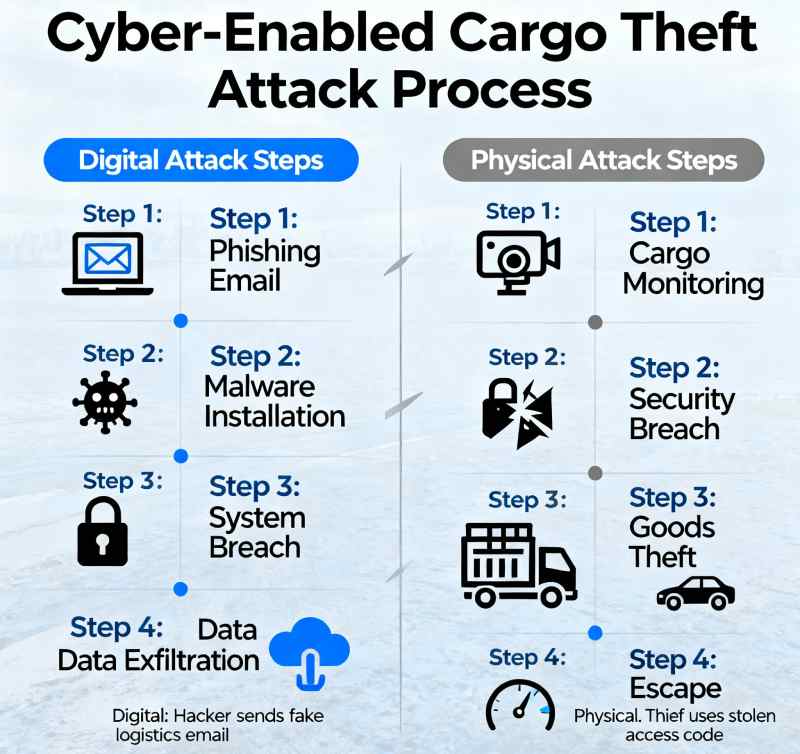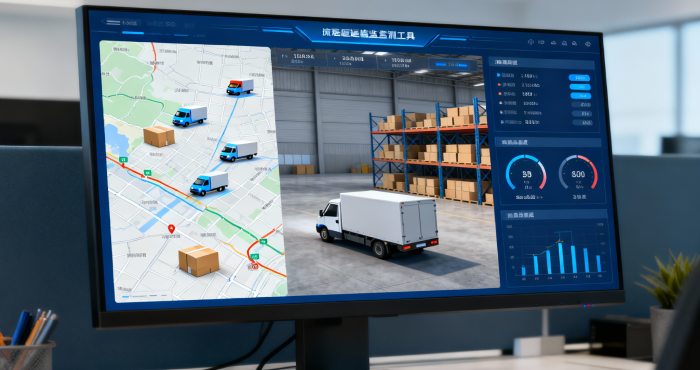Real world cargo: The new obsession of cybercrooks!
In a shocking turn of events, cybercriminals have started to blur the lines between the digital and physical worlds. Hackers are no longer restricted to just digital data. They are now abusing remote computer tools to steal actual physical cargo from freight companies and trucks.
Researchers have unveiled a malicious campaign where cybercriminals creep into the not-so-well-protected systems of logistics and transportation companies. Next, they hijack legitimate freight operations and gain access to goods worth millions.
This is one of the latest forms of cyber-enabled crime and is a staggering reminder that cybercooks are always one step ahead of us. This new trend involves online hacking that eventually turns to offline theft. Because of this new campaign, the entire global supply chain is facing an imminent threat of cyberattack. Till now, this sector has been coping with inflation, logistics bottlenecks, and geopolitical tensions. But now, cybercrooks are also giving it a hard time.
The new cyber scheme behind cargo theft
An online “load board” is all it takes to start this massive cyber scam. Basically load boards are the digital platforms where freight brokers and trucking companies enlist and bid on cargo shipments. Cyberscammers target these platforms, manage to gain access to accounts, and create fake cargo listings. The real game starts when real trucking companies take suitable actions on these listings.
The cybercrooks send malicious links amidst regular conversations. When a trucking company unknowingly clicks on one of these phishing links, cybercriminals get complete access to their network. Next, they conveniently install remote monitoring and management (RMM) tools. These are legitimate software programs commonly used by IT teams in order to troubleshoot devices remotely.
Once they are into the network of a trucking company, the cybercrooks start bidding on real freight jobs, while pretending to be legitimate carriers. After closing a contract, they steal or divert the goods during transit. Next, they sell the goods online or ship them through notorious overseas networks.
Hacking or heist?
Researchers’ investigation reveals that the malicious campaign has been quite active since June 2025. However, experts believe that hackers are exploring this space for quite some time now. The report explains how threat actors misuse popular RMM tools such as PDQ Connect, ScreenConnect, Fleetdeck, LogMein, Nable, etc., to target victims.
At times, the cybercriminals use different tools simultaneously (For example, ScreenConnect and PDQ Connect) to penetrate deeper into the network of the trucking companies’ systems.
These cybercriminals are highly proactive and target any carrier that falls for their malicious attempts. From small family-run companies to huge logistics firms, the hackers target anyone and everyone. For threat actors, no company is too big or too small as long as it is a part of the supply chain ecosystem.
Digital-backed physical theft
As soon as threat actors get access to the systems of a trucking company, they carry out reconnaissance, i.e., they try to detect the shipments that are worth stealing. Once the right shipments are discovered, the hackers carry out the real theft.
One of the most common practices is to bribe the truckers and involve them in the physical theft attack plans. Another strategy used by scammers is known as double brokering. This tactic involves reselling a job to any legitimate trucking company that unknowingly picks up and then delivers the cargo to one of the hacker-controlled warehouses.
Experts believe that all these theft operations require some of the scammers to be physically present to get access to the goods. Sometimes, these heists involve mules or people who are paid to receive these stolen items. These people then resell the stolen products or even ship them to other nations.
This new development in the world of cybercrime is a stark reminder that cybercrooks have learnt how to use digital tools to not only enter your digital network but also physical premises to carry out illegitimate thefts.
On average, cargo theft already drains a staggering $35 billion from the global economy each year. The latest cyber-enabled heists are set to inflate these losses further, complicating an already strained supply chain. With hackers now blending digital infiltration with physical theft, the financial and operational toll continues to rise—making robust phishing protection an urgent priority for freight and logistics firms worldwide.
The merging of the physical and digital supply chain is creating immense opportunities for cybercrooks. They are in a position to exploit both worlds equally. That’s exactly why logistics and freight companies must now focus on cybersecurity too, besides fuel prices and delivery efficiency. They must move with caution and avoid every fake email or unauthorized logins at any cost.
The key to safeguarding your cargo in 2025 and beyond is to defend both your trucks as well as digital networks.





